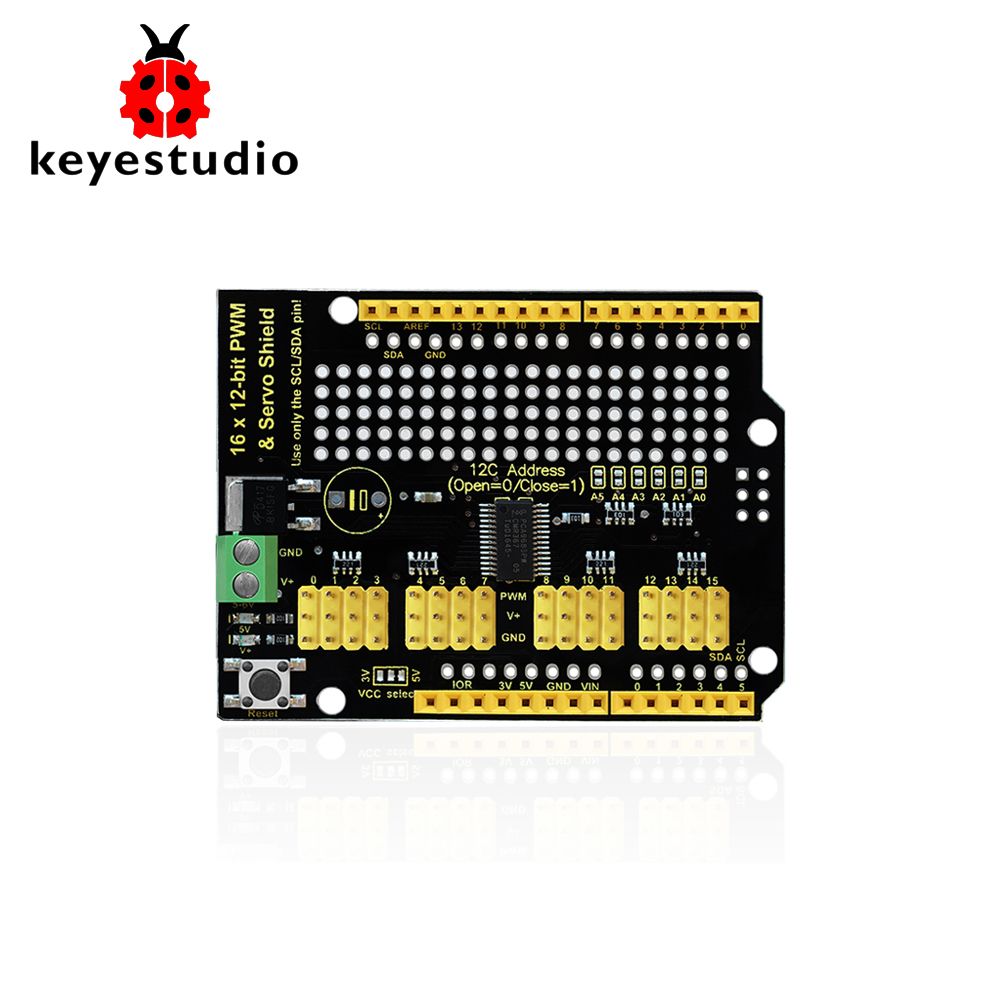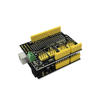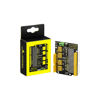When we are doing robot experiments, it needs to use multiple PWM ports to drive the servo motor, however, the commonly-used Arduino UNO R3 only has 6 PWM ports, really not enough. This allows you to use this expansion board, which is directly stacked on the Arduino UNO R3 board. It can drive up to 16 servos and use I2C input, occupying A4 and A5 pins of UNO.
The shield also comes with PCB double-sided holes, which can be used to solder with components to build up prototyping circuits.
Specifications
-
I2C input, controlling 16-channel PWM output
-
Servo power independent input V+, up to 6V.
-
Logic signal and logic power independent output 3-5V
-
Frequency: 40-1000Hz
-
Channels: 16-channel
-
Resolution: 12-bit






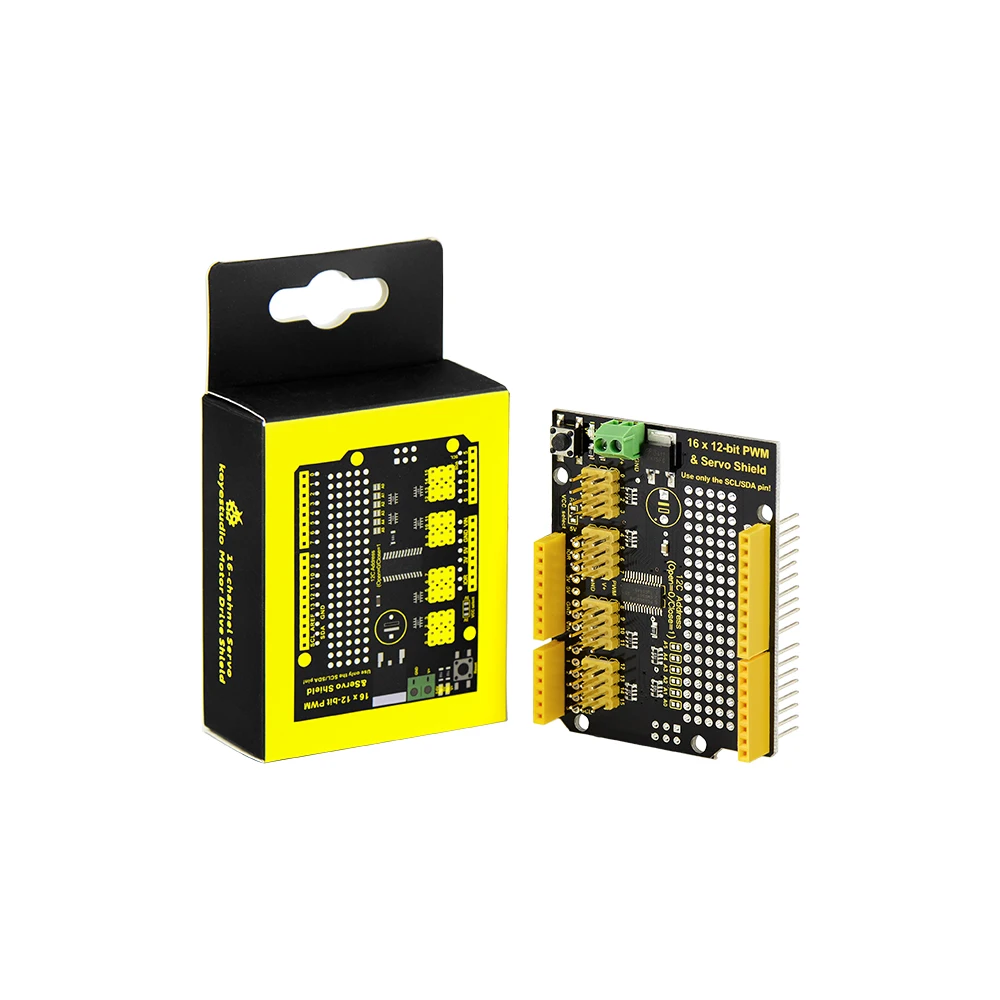
Introduction
When we are doing robot experiments, it needs to use multiple PWM ports to drive the servo motor, however, the common used Arduino UNO R3 only has 6 PWM ports, so it is not enough.
This allows you to use this expansion board, which is directly stacked on the Arduino UNO R3 board and can drive up to 16 servos. It uses I2C input, just occupies A4 and A5 of the Arduino UNO R3 board. The expansion board contains PCB double sided holes ,which can direct to solder with components to build up prototyping circuits.
Performance Parameters
1. I2C input, to control 16-channel PWM output
2. Servo power supply independent V + input up to 6V
3. Logic signal and logic power independent output 3-5v
4. Frequency of 40-1000Hz
5. Number of channels: 16-channel
6. Resolution: 12-bit
Result
Burning the code on Arduino UNO R3, then connect 16 servo motors as shown below, you can see
them rotate in succession.
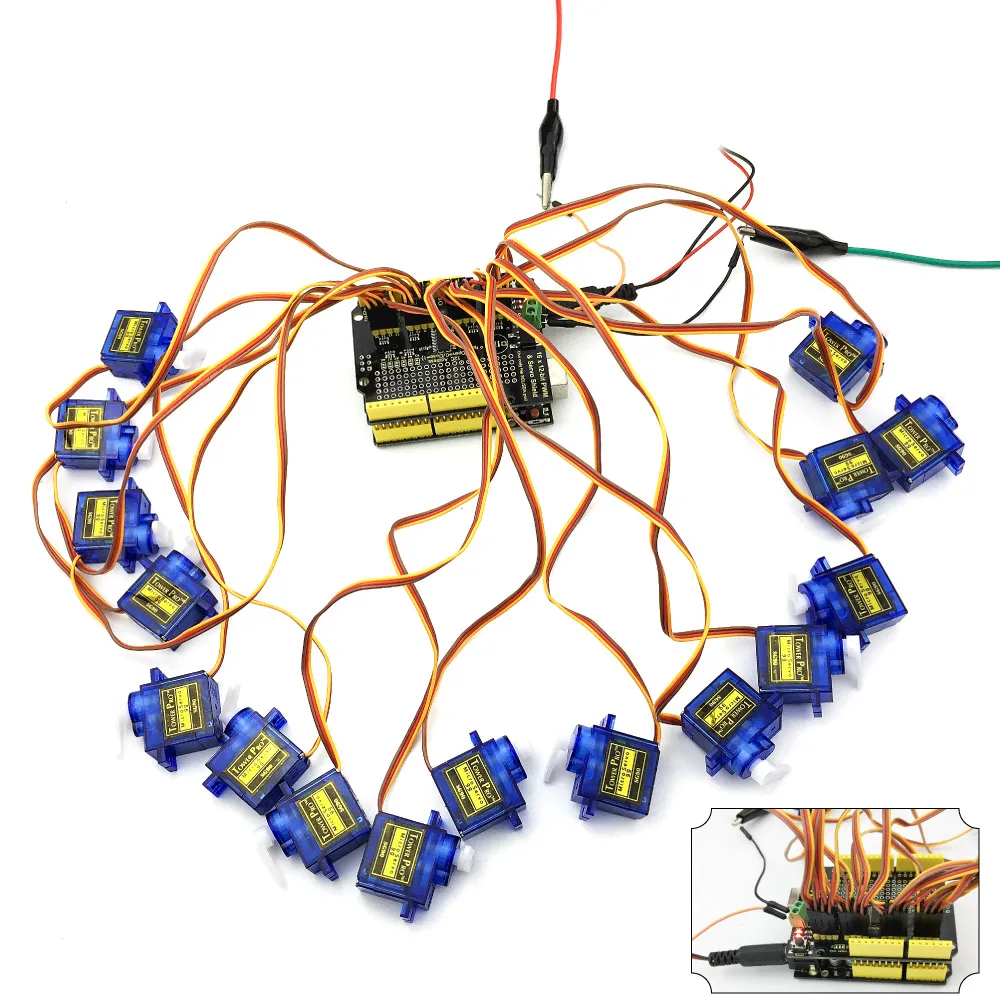
Related Data Link
Get the Adafruit PWM Servo Driver Library

